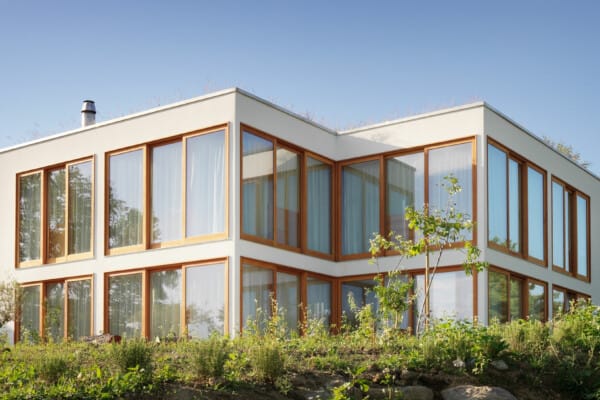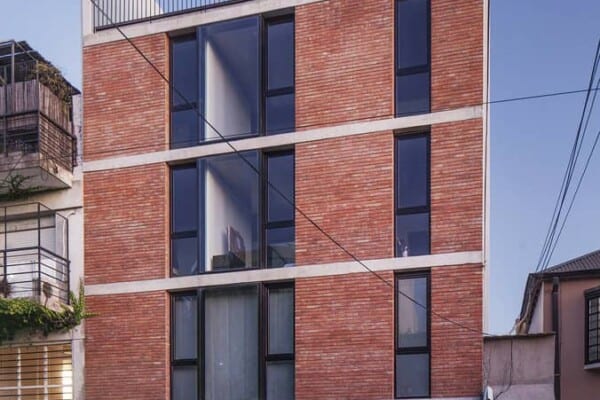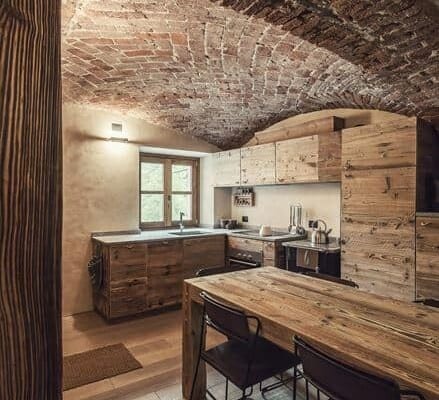Off/Ramberg House is a residential project completed by Schjelderup Trondahl Architects AS.
It was finished in 2013 and is located in Holmestrand, Norway.
Off/Ramberg House by Schjelderup Trondahl Architects AS:
“Location
The city of Holmestrand is divided by a characteristic 120m (394ft) vertical cliff, separating urban functions at the lower sea side from the housing estate on the upper level. Holmestrand is under constant transformation being a part of suburban Oslo and important for commuting and regional business. The Norwegian State Railways are currently building new tracks to the city with a new elevator shaft between upper and lower levels, thereby improving the connection further.
The single family house is situated on the edge of this prominent cliff edge overlooking Holmestrand and the fjords. The site has a spectacular 180 degree view towards the sea to the east and an open cultural landscape to the west. The challenge in sites like this is usually to refine the views rather than exposing everything everywhere, switching between distant and close views, glimpses and different sources of light and reflections.
Adapting to site
The house was planned merged with the terrain with the least possible intervention, based on extensive analysis of program, strict municipal regulation, landscape characteristics, views (both distant and close) and the vegetation/location. The site was measured down to 10cm (4in) accuracy allowing untouched terrain and existing trees to be planned right up next to the building.
The volume has a distinct duality with its compact, west façade facing towards the access road and the more extroverted and fragmented façade opening up to the great eastern view. The two main wings are bent 22 degrees relative to each other to adapt to the terrain and capture different views. Because of its complex form, cantilevered roofs, shifting facades and intersecting spaces the house offers a spacial experience, a number of different views and randomly occurring reflections.
House specifics
The ground floor body is made from site-typical colored tile stone diaphragm walls (two sided) and light concrete floors. The upper part of the house is a wooden box climbing and cantilevering over the heavy base. The walls, external ceilings and roofs are covered with burnt and brushed heartwood fir to make them maintenance free for generations – a Norwegian style of the Japanese method Shou-Sugi-Ban. The patination process will continue. With time the soft parts of the surface will stay burnt and the harder winter grain will have become silvery gray resulting in a rough but refined expression.
The interior wooden walls and ceilings are clad with white oiled poplar plywood boards and white ash floorboards are used introducing a light softness to the interior. The internal geometry represents necessary constructions for the cantilevered roofs in addition to defining spaces. Integrated furnishings are made on site from white fiber cement boards or bronze colored Glimmerdesign lacquered MDF depending on their placement and function. All windows and doors are made from massive oak.”




Photos by: Jonas Adolfsen





















































